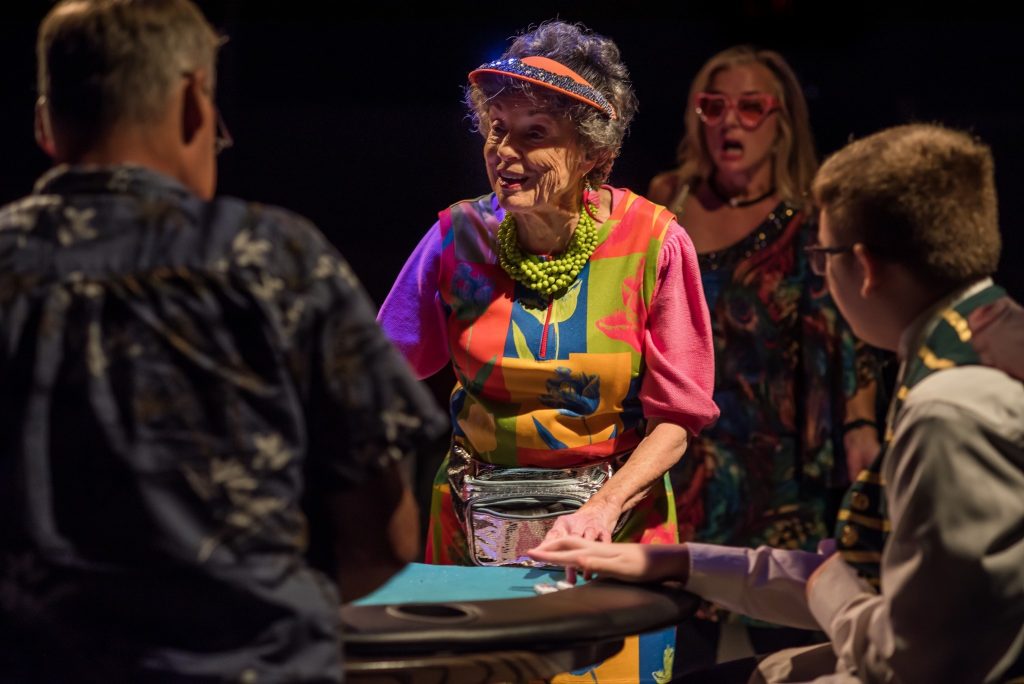By Michael Buzzelli
Everyone has a favorite sandwich. Point me toward a Caprese with heirloom tomatoes, burrata, fresh basil, a splash of Extra Virgin olive oil, a drizzle of a dark, tangy balsamic with a dash of coarse sea salt on a crusty French baguette. You might not like my sandwich. I might not like yours. You might like a turkey with mayo on sliced white bread. We all have different tastes.
While this is a review of a play and not a restaurant, the two are intrinsically tied together.
“Clyde’s” takes place in a sandwich shop, a truck stop, where ex-cons prep and cook the food. The short-order cooks are short-tempered, too, except for zen master and sandwich artiste Montrellous (Khalil Kain). The staff is bossed around by the titular Clyde (Latonia Phipps), who is more of a supervillain than restaurantuer. She’s the Kingpin of the kitchen, terrorizing and sexually harrassing her beleaguered employees. Doc Doom of the diner. Her staff, chiefly Letitia (Saige Smith), Rafael (Jerreme Rodriguez) and new hire Jason (Patrick Cannon) are frightened of her.
The ex-cons are afraid that working at Clyde’s is their only option, but Montrellous tries to keep hope alive by challenging the crew to come up with the perfect sandwich. There are a lot of breads, cheeses, meats and veggies mentioned in the play. Don’t go on an empty stomach.
The show has some weird supernatural elements to it as well. Things get spooky wherever Clyde gets near a sandwich, and she breaks the fourth wall once, ordering the effects to cease on command. At one point, Clyde pulls a Magneto and causes Rafael to press his hand on the grill with her mind. His palm sizzled like a frozen hamburger patty. It may have been a dream sequence. The metaphysical and metatextual elements were served up in heaping portions.
Smith is a standout here. Her character of Letitia (Tish) is sympathetic and charming, even when she is not always being kind to her fellow sandwich makers.
There’s a lot of intrigue about Cannon’s Jason. Nottage parses out the details about Jason like breadcrumbs. Wisely, she doesn’t give us the full story. It’s not necessary. Cannon plays him as big, bold and brash. His delivery caused a riotous uproar of laughter.
Phipps is, however, too far over the top. Director Monteze Freeland lets her off the chain. Clyde is played for laughs. She gets huge guffaws from the audience, but the character has no depth. Phipps doesn’t bother to give her any either.
For a run-down truck stop kitchen, the set is perfection. Tony Ferrieri is planning on going out with a bang. Every detail of the diner was meticulously planned between Ferrieri and the props department, right down to the fluorescent, yellow squares of American cheese.
Side note: On opening night, there was a standing ovation for the beloved and talented set designer who is retiring in December after decades at the City Theatre’s Director of Production and Resident Scenic Designer. Special shout out to the set of “Elmenopea,” the Hope Diamond among a treasure chest of jewels.
When I heard the clamor of applause for Lynn Nottage’s play, “Clyde’s,” I pictured that turkey sandwich. People love turkey sandwiches. It just wasn’t for me. In all fairness, my expectations ran high, because a few years ago, Lynn Nottage’s Pulitizer Prize-winning play “Sweat” came to Pittsburgh, and it was and still is one of the most fascinating plays I’d seen in a long while.
– MB
“Clyde’s” runs through October 16 at the City Theatre, 1300 Bingham Street, Pittsburgh, PA 15203. For additional information and tickets go here: CLYDE’S – City Theatre Company










